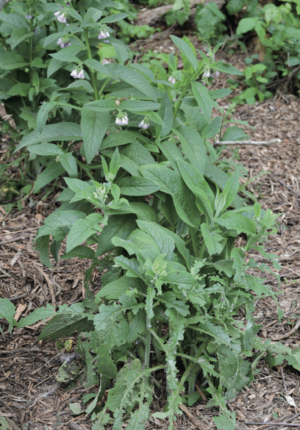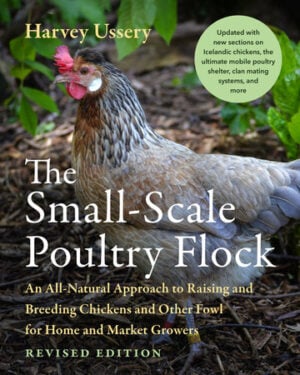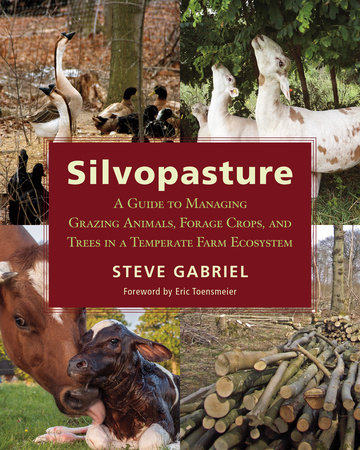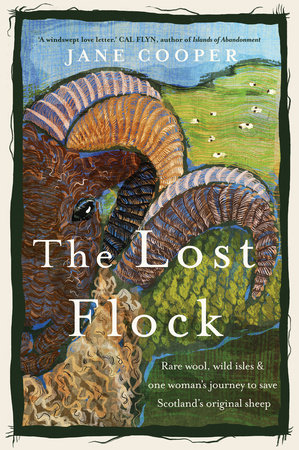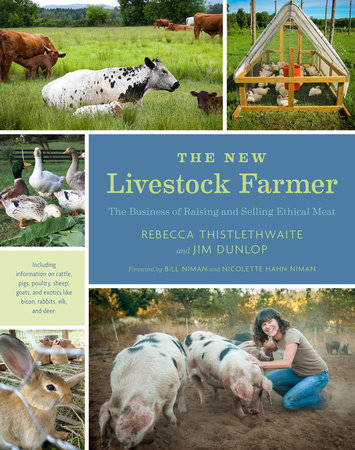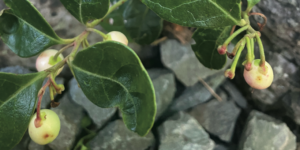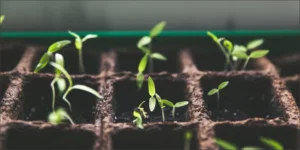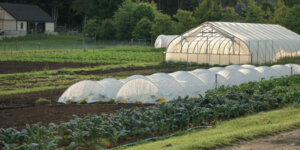Naturally Feeding Your Flock: Feed Poultry With Fresh Greens
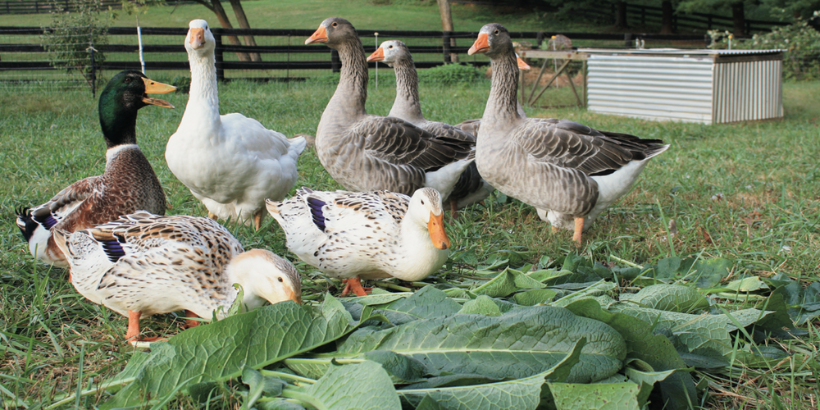
“Nothing we can buy in a feed bag can match the breadth and depth of nutrition to be discovered right at home.” — Harvey Ussery
Feeding your flock naturally comes with a variety of benefits, from boosting poultry health to saving you money on feed bills. Resources that are readily available at your farm or homestead, like fresh greens, are the perfect natural and nutritious meal for your poultry flock.
The following is an excerpt from The Small-Scale Poultry Flock: Revised Edition by Harvey Ussery. It has been adapted for the web.
Unless otherwise noted, all photographs copyright © 2022 by Harvey Ussery. Featured image courtesy of Bonnie Long.
Feeding Your Flock With Natural Resources
I think of my grandmother’s flock as the model for natural chicken feeding. Her chickens were eating their three food groups, whose defining characteristics were that they were alive and raw. Now reflect as well: They ate almost completely from home resources. Increased home feeding—decreased dependence on purchased feeds—is a possibility for every flock, wherever located.
Why not start experimenting now? I have heard from so many who have done so and who report: “It works—I’m saving real money on feed bills.”
Fortunately, there are a multitude of the three food groups options on almost any homestead or small farm, and many ways to combine natural feeding strategies. And who would have imagined that saving money on feed bills could be so much fun?
Green Forages: Feeding Your Flock With Fresh Greens
Find ways to provide your flock fresh green plants, the first of their food groups, daily. Best of all is keeping them on pasture and other natural range with access to all three food groups at once—even flocksters on small properties successfully “pasture” their birds on their lawns.
Fertility Plants: Comfrey and Nettle
I grow comfrey and stinging nettle to feed the soil as mulches or composts, not only for their mineral content but because they are high in nitrogen and are quickly converted by soil and compost heap microbes. They can also be fed to poultry.
Both plants have a bad reputation. Many gardeners fear comfrey as dispersive, spreading via millions of seeds, or invasive, spreading aggressively via underground runners. In fact, it is neither. It sets flowers—thus supporting pollinators—but does not make viable seeds.
And it does not spread—the first patch I planted hasn’t moved an inch in thirty years. But it certainly is persistent—not surprising given the reserves in its thick, fleshy roots, which grow 8 to 10 feet deep (2.5 to 3 m)—and will not move from where you choose to plant it without a serious fight.1
Propagating Comfrey and Nettle
Comfrey is child’s play to propagate—once a patch is well established, take crown cuttings and expand your plantings as much as you like. I either cut and carried it to my flocks—geese and ducks especially love it—or gave the birds direct but temporary access to patches of it planted in ranging areas.
Nettle, however, is both dispersive and invasive and therefore needs vigilant “discipline” to keep it in place. I cut it as soon as it started to flower to prevent seed set, and cut it back at the edges of the patch when its roots got adventuresome. Nettle is high in protein and mineral content.
Often in the summer I dried some comfrey and nettle “hay” for feeding in winter, crushed and sprinkled over the birds’ feed.
Cover Crops
I love growing cover crops. If you like jigsaw puzzles or chess, you will, too: Despite the challenges to pulling it off—both in space (a garden that is simultaneously used to grow food crops) and in time (all four seasons)—maximizing cover cropping year-round brings so many improvements to soil fertility and texture that no opportunity to sneak in a cover crop should be missed.
Fortunately, cover crops can do double duty as green feeds for the flock. We can cut the greenery to carry to the flock—it quickly regrows—or let the chickens till in the plants as they dine.
Note that I no longer bother growing fall crucifers—mustards, winter radishes, raab, kale, rape, turnips—as separate garden crops: I just sow them as fall cover crops, and there’s a gracious plenty for everybody—the soil food web, our poultry, and us.
Weeds
Weeds may annoy gardeners and landscapers determined that nothing grow on their place they didn’t plant, but many wild plants with a mind of their own make valuable contributions to flock nutrition; and some (dandelion, lamb’s-quarter, nettle, burdock, yellow dock) are higher in protein than alfalfa. Poultry relish them all.
Take dandelion, toward whose demise millions of dollars are dedicated every year but so nutritious as a cooked or salad green that herbalists extol it as superfood and medicinal.
In addition, it is a dynamic accumulator: Its taproot grows into the deep subsoil and mines it of minerals, especially calcium, which it makes available to more shallow-rooted plants. (Both the fertility plants discussed on the previous page—comfrey and nettle—are also dynamic accumulators.)
Things to Consider With Weeds
Of course, such friends may not be equally welcome in all parts of the garden, orchard, and landscape, so remember that weeding chores can furnish valuable green fodder for the flock. The most useful weeds where you live will vary. The few that are toxic vary as well, so familiarize yourself with ones that could be hazards for poultry where you live.
Examples of toxic plants are castor bean (Ricinus communis), milkweed (Asclepias spp.), immature berries of nightshade (Solanum nigrum), oleander (Nerium oleander), jimsonweed (Datura stramonium), pokeberries (berries of Phytolacca americana), and yew (Taxus spp.). Such plants are rarely a real threat to chickens, however—most they avoid instinctively.
Note that in some cases it is not the plant that is the threat but the mature seeds. For example, hairy vetch (Vicia villosa) is an excellent nitrogen-fixing cover crop and its foliage is edible for poultry, but remember that its seeds are toxic. Chickens are unlikely to eat jimsonweed but may eat its seeds. Seeds of both plants have been implicated in actual poisonings of poultry.
Feeding Your Flock With Edible Weeds
Once you’ve identified the toxic plants to look out for, feel free to experiment with harvests from weeding nontoxic species. Weeds vary in mineral content, so the wider the range of weeds available to the birds, the more likely their mineral intake will be in balance.
In most temperate areas, the following palatable weeds should be common. Many of them make fine people food as well.
- Prickly lettuce (Lactuca serriola), likely to show up in shady areas.
- Purslane (Portulaca oleracea), rich in omega-3 fatty acids, vitamins, and minerals.
- Dandelion (Taraxacum officinale), superfood for chooks as well.
- Lamb’s-quarter (Chenopodium album), one of whose common names, “fat hen,” hints at its utility as poultry feed.
- Yellow dock (Rumex crispus), rich in vitamin A, protein, iron, and potassium, though it should not be overfed because of its oxalic acid content.
- Chickweed (Stellaria media), how do you suppose it got its name? Common and prolific, both the plant and its seeds are highly nutritious feed.
Grass Clippings
If your situation prohibits bringing the flock to the pasture, bring the pasture to them: Lawn clippings—from lawns that have not been treated with toxic chemicals— are excellent fresh forage. Short, rapidly growing grass yields the highest levels of nutrition. Do not feed too large a volume at one time—excess clippings accumu- late into an anaerobic, slimy mess. If you are using your birds to work compost heaps, however, you need not worry about feeding too many clippings—the chickens will work whatever they don’t eat into the heaps.
Recent Articles
Wintergreen is the stunning evergreen groundcover that’s a game-changer for your garden! It’s cherished for its aromatic leaves, vibrant fall color & bright berries.
Read MoreGrow winter carrots for a sweeter & more flavorful harvest! Ditch the bland, store-bought carrots this winter! Grow your own winter carrots for a sweeter and more flavorful twist 🥕🥕
Read MoreSearching for the perfect book to give the homesteader in your life? We’ve got your go-to books for anyone interested in organic growing, permaculture, soil health, year-round growing & more! What’s their next great read?
Read MoreWinter is coming… but that doesn’t mean you should put away those tools just yet. Extend the growing season well past the first frost!
Read MoreThe dirty truth? Soil isn’t just dirt! It’s a complex web of life. Discover the secrets to unlocking its full potential and transform your garden forever.
Read More

